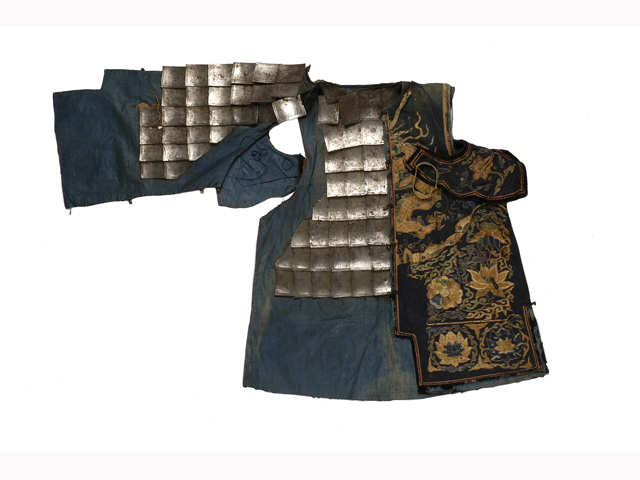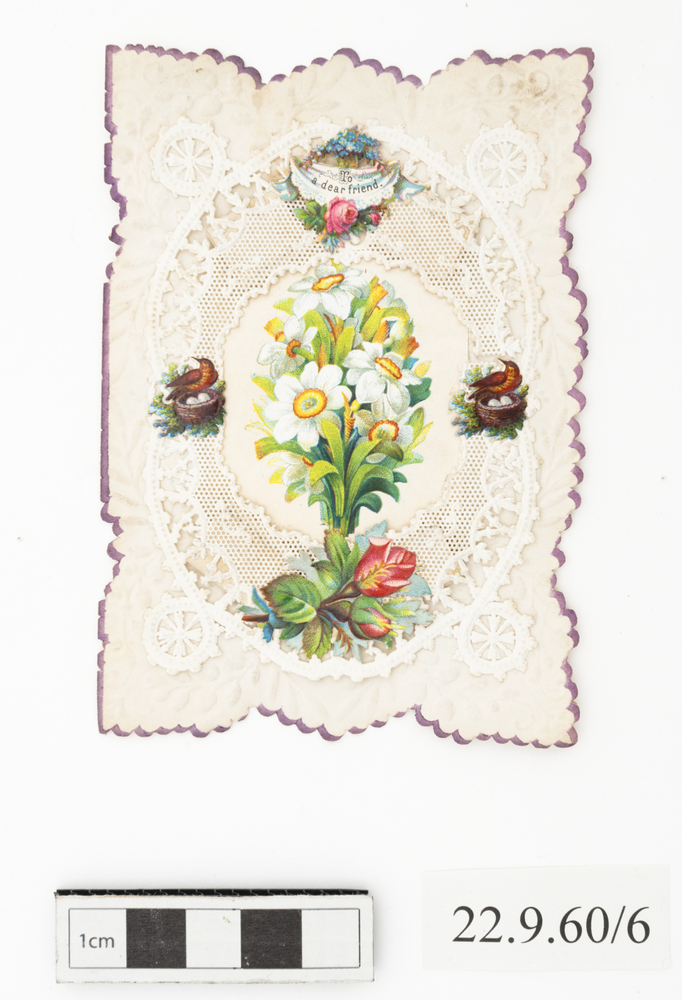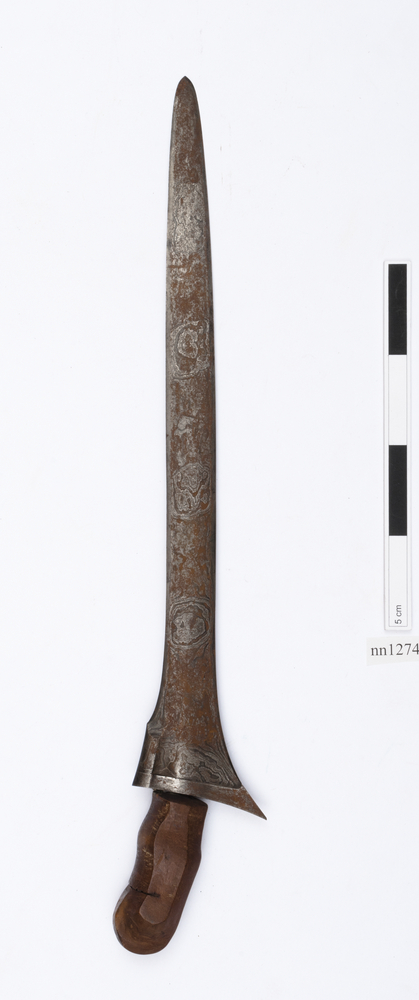
Chinese armour consisting of a brigandine and armpit guards. The body of the brigandine has a central front opening secured with five metal toggle-loop buttons, slit sides, and four leather ties round the collar. The brigandine is of indigo cotton with a black velvet border, lined with pale blue cotton, and with lining of rectangular iron plates riveted on the inside. The two armpit guards are in cloud collar shape of indigo cotton edged with black velvet, with iron plates under a pale blue cotton lining. Each arm guard is sewn to the back of the brigandine and has two metal toggle-loop buttons and two cotton ties to fasten to the brigandine. The front and back of the brigandine are decorated similarly with the upper chest decorated with a four-clawed dragon chasing a flaming pearl rising above mountain rocks and waves. Underneath the chest is a lotus and another type of flower with a yin-yang symbol at the centre amidst leafy scrolling. Above the hem are four roundels of baoxianghua designs in stylised lotus flowers with features of peonies. The armpit guards are decorated with a stylised floral design. A rectangular strip of red silk with Manchu inscriptions is sewn on the back of the brigandine.
A similar brigandine is dated to the second half of the 17th century, Shunzhi period (1644-1661). See Fig. 75 (3, 5 & 6) pp. 57-58, Stone, George C. (1934), 'A Glossary of the Construction, Decoration and Use of Arms and Armor in All Countries and in All Times', Portland, Maine: The Southworth Press.


































































































































































































































































































































































































































































































































